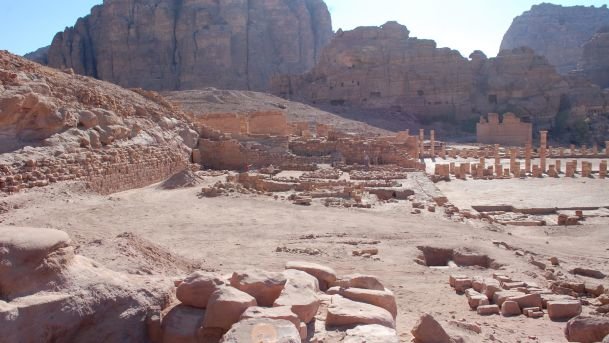
Petra is perhaps best known for its sandstone canyon that leads directly to Al Khazneh, The Treasury, seen in the climax to "Indiana Jones and the Last Crusade" where the hero archaeologists, played by Harrison Ford and Sean Connery, ride out of the canyon and into the Treasury in their quest for the Holy Grail.
However, 2,000 years ago, Petra was renowned for completely different reasons. It was one of the most famous water stops in the Middle East, where camel caravan routes linked distant cities. Now archaeologists are discovering the Nabataean capital, situated in the southwestern deserts of Jordan, once was adorned with an exquisite, artificially irrigated garden. It featured paths likely shaded by vines, trees and date palms, and grasses, which were cultivated next to a huge, 44-meter wide swimming pool.
The Nabataeans' ability to tame nature, and conspicuous consumption of a precious resource, water, was pure propaganda. It was a means to display wealth and power, which they could do thanks to the ingenious hydraulic system they invented, which allowed the people not only to reserve enough water for their own needs, but to water the lavish garden with fountains and an open-air pool. It had previously been unthinkable that water, a scarce resource in the desert wastes, would have been used for anything but necessity.
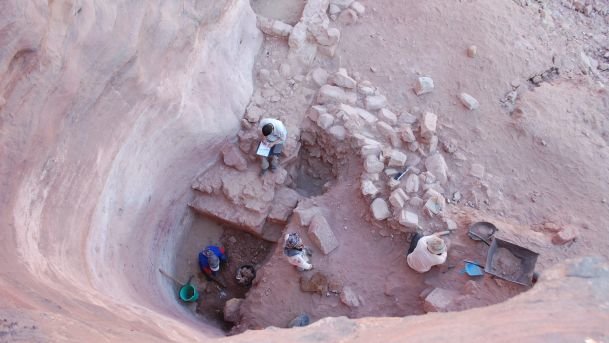
Ongoing excavations in Petra have uncovered a shaft that appears to have led water more than 10 meters downward, from the aqueduct system to the pool level. The archaeologists have also found underground channels that helped control runoff during the rainy season, revealing the true complexity of the system for the first time.
The intricate system of channels, ceramic pipelines, underground cisterns and water tanks, which also filtered the water, allowed the people of Petra to cultivate crops, harvest fruit, produce wine and olive oil as well as build a lavish garden with a monumental open air pool in the middle of the desert.
Slaking the camels' thirst, for a charge
Many cities of the ancient world straddled rivers, whose abundant water nourished and protected them. But Petra, situated on the northwest border of the Arabian Desert, rose to prominence because of the lack of water.
Petra stood at the crossroads of two important trade routes. One linked the Red Sea with Damascus. The other linked the Persian Gulf with Gaza, on the shores of the Mediterranean. Caravans from the Gulf, loaded with precious cargoes of spices, had to cross the vast wastes of the Arabian Desert, trekking for weeks before finally arriving at the narrow canyon that was the welcoming entrance to Petra. Petra meant food and lodging and, above all, cool, refreshing water.
Naturally, the citizens of Petra did not provide these comforts free of charge. The Roman historian Pliny reports that - beside the payments for fodder and lodging - gifts had to be given to the guards, the gatekeepers, the priests, and the king's servants (Natural History, Book XII). But the exorbitant prices that spices and perfumes could fetch in the prosperous cities of Europe kept the caravans coming, filling up the treasuries of Petra.
The Paradise of Petra
The gardens were practically a miracle. Petra only gets 10 to 15 centimeters of rain a year (now in the era of climate change, it may get even less). That's just 4 to 6 inches. Without developing techniques to to channel, purify and even pressurize and store water, Petra could not have existed.
As was done in Jerusalem too, for instance, the people of Petra carved out channels, reservoirs, and cisterns from the solid rock, even "tanks" that purified water.
Practically every drop of rain that fell around Petra was collected and conserved, and springs were channeled to pipes that emptied into literally hundreds of cisterns carved underground, ensuring a reliable supply of drinking and bathing water in the heart of the desert, regardless of the season.
Describing Petra in the late-first century BCE, the Greek historian, Strabo wrote that there were "abundant springs of water both for domestic purposes and for watering gardens" (Geog. XVI.4.2 1)
Botanical studies show that the garden was highly ornate, adorned with palm trees and grass species. The archaeologists also found charred seeds and nut shells, but what that means remains to be seen.
"The charred seeds and nut shells we find are most likely from fertilizer, and so are not evidence that those plants themselves grew in the garden," Bedal told Haaretz.
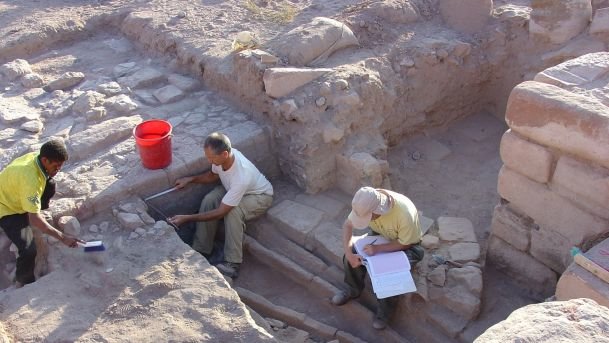
The monumental swimming pool, a monster even wider than today's standard Olympic pools, was built around the 1st century BCE.
Pools began to become trendy in the region in the previous century, the 2nd century BCE. The Hasmonean rulers of Judah built pools surrounded by gardens at their palaces. The Hasmonean palace in Jericho, an equally arid place, had no less than seven.
Herod the Great, the Roman vassal king of Judah, continued the tradition, building a monumental swimming pool with a sunken garden in his third winter palace at Jericho. The Herodian design, with an island pavilion, decorative tiles, molding and a large garden terrace, is almost identical to the garden pool at Petra.
City carved in rock
The citizens of Petra now only knew how to work with water, they were also masters at masonry. The very name Petra, which means "Mass of Rock," summons up visions of stone. And Petra was indeed a city of stone, unlike any other in the Roman world. The Nabataeans painstakingly carved their houses, tombs, and temples out of the solid rock. The red sandstone mountains in which Petra was nestled were perfectly suited for this, and by the first century C.E., a monumental city had arisen in the middle of the desert.
Perhaps the most visually stunning testimony of the Nabatean mastery over stone is the Treasury, an imposing structure carved out of a massive cliff. The structure was named after the huge stone urn that crowns the building and that supposedly stored gold and precious stones. The urn is actually made out of solid stone.
However, whatever Steven Spielberg imagined, the structure does not lead into a deep labyrinth that hides the Holy Grail. Instead the Treasury holds a relatively small hall once used as a royal tomb.
The city also features tombs carved into the cliff face, tombs so tall they dwarf anyone daring to venture into their dark interiors.
Petra survived for centuries, but once Rome formally took possession of the city in 106 C.E., its importance in international trade began to wane. A colonnade and theater testify to the Roman presence in the city during the first and second centuries. But in time, the Romans developed sea-lanes to the East, the overland spice trade collapsed and Petra was gradually abandoned to the desert sands. It would finally succumb at the end of the Byzantine Empire's rule, around 700 C.E.
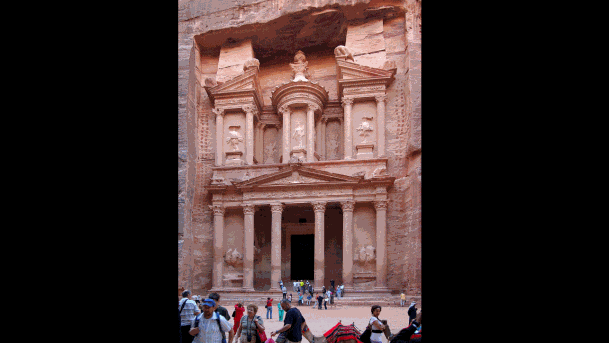
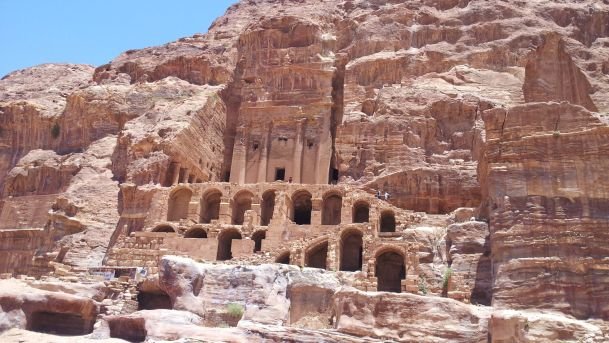



Great Idea From US’s Smelly, Foggy Bottom, Central Idiot Agency, Et al:
Bring In US head chopping, cannibal ‘moderates’ to destroy these heathen /infidel remnants.
(Then, ignore all facts and blame it on Russia.)
R.C.
(Sarcasm.)